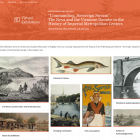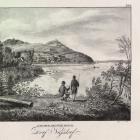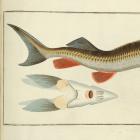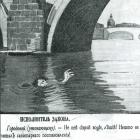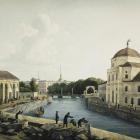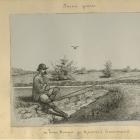About the Exhibition
The idea for this exhibition emerged from the joint Russian-Austrian research project “The Long-Term Dynamics of Fish Populations and Ecosystems of European Rivers.” During their investigation of historical fish populations in the Neva in St. Petersburg and the Viennese Danube, the research teams discovered numerous links between the cities and their rivers. For the project, we searched for visual and material objects as sources, in addition to the written documents. With a few exceptions, this material could only be mentioned in our scientific publications. With this exhibition, we hope to reach the public as well. It visualizes the interrelations between two great European rivers and two imperial capitals, between circa 1700 and 1914, and reveals some hidden sides of the urban life, especially related to fisheries.
The chapters of this virtual exhibition focus on specific themes, presented in a comparative slider, allowing the reader to switch between the to cities. In the five chapters we provide a general introduction to the history of the rivers and the cities (“The Rivers and the Cities – A Brief Introduction”). In “Fisheries, Fishers, and Fish Trading in the Urban Environment” we describe the economic and social role of fisheries, fishermen, and fish trading in Vienna and St. Petersburg. Fish populations and subsequently fisheries in both rivers were considerably modified by changes in the riverine landscape but also by industrialization and pollution. This is presented in “Changing Landscapes and River Control” and “Pollution and Industrialization of the Austrian and Viennese Danube in the 19th and Early 20th Centuries.” The final chapter (“Fish Consumption”) describes the role of fish in city dwellers’ diets and cultures.
The Rivers and the Cities – A Brief Introduction
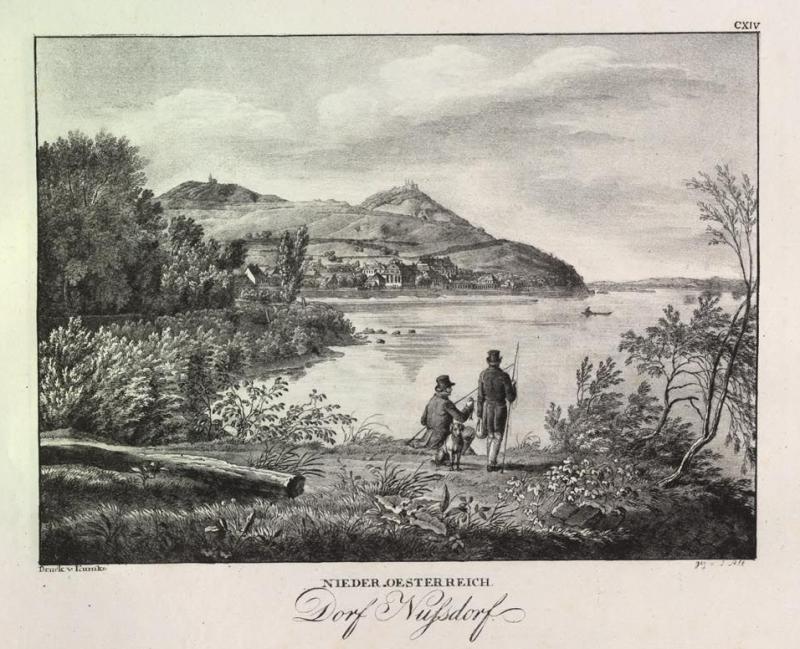
Recreational fishing with fishing rods was still rare in the beginning of the nineteenth century. Adolf Kunike, Dorf Nussdorf, 1826.
Recreational fishing with fishing rods was still rare in the beginning of the nineteenth century. Adolf Kunike, Dorf Nussdorf, 1826.
Courtesy of Wien Museum.

This work is licensed as a Public Domain Dedication.
Both the Neva and the Viennese Danube are metropolitan rivers of two formerly great empires. St. Petersburg and Vienna, as imperial capitals, were centers of politics, commerce, religion, and culture, and the flagship cities of their respective empires. The rivers played a decisive role in the formation and development of the cities’ urban space. However, the spatial relations of the two cities with their rivers were quite different. St. Petersburg grew from the very beginning on both banks of the Neva and its many branches. The river was transformed into a major part of the city’s infrastructure and water supply, while its frozen surface became a central space in the city in winter. In contrast, medieval Vienna developed on the right bank at some distance from the main river, which nevertheless played a major role in transportation, fisheries, and other economic activities. In this section of the exhibition, we present and discuss how the rivers made two cities into flourishing and representative capitals, impressive for visitors and inspiring for the locals.
Fisheries, Fishers, and Fish Trading in the Urban Environment
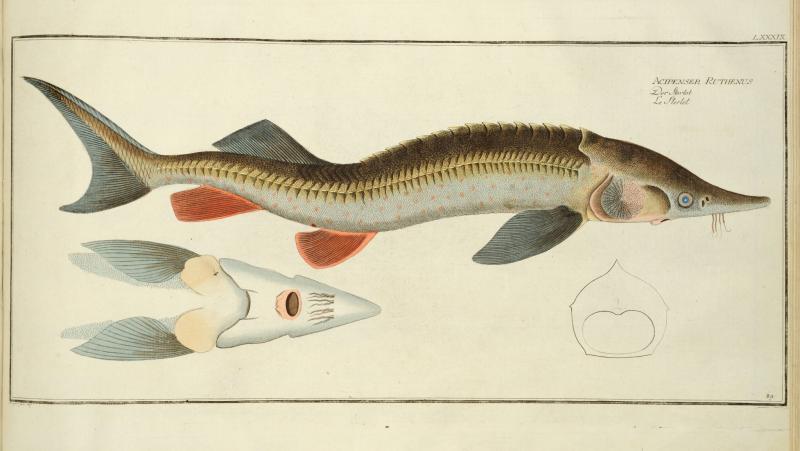
The sterlet belongs to the family of sturgeons. In contrast to the diadromous Beluga sturgeon, it is a pure freshwater fish and still inhabits the Austrian Danube. Illustration by George Bodenehr and Krüger, late eighteenth century.
The sterlet belongs to the family of sturgeons. In contrast to the diadromous Beluga sturgeon, it is a pure freshwater fish and still inhabits the Austrian Danube. Illustration by George Bodenehr and Krüger, late eighteenth century.
© Naturhistorisches Museum, Wien.
Originally published in Bloch, Marcus Elieser. Allgemeine Naturgeschichte der Fische. Berlin: Morino, 1782–95. Plate 89.
This work is used by permission of the copyright holder.
Big imperial metropolises are usually considered as political, industrial, and cultural centers, but not as rich fishing grounds. However, due to the central role the rivers played in urban structure, one finds numerous places occupied by fisheries, as well as fishers and fish traders, right in the center of the imperial capitals and in their immediate vicinity. This section of the exhibition describes fish resources in St. Petersburg and Vienna and their role in urban life from different perspectives. Fisheries constituted an important part of local economic activities and fishers—both poor professionals and wealthy leisure anglers—were very visible in the cities’ crowds, at their markets, and on the banks of their rivers and canals.
Changing Landscapes and River Control
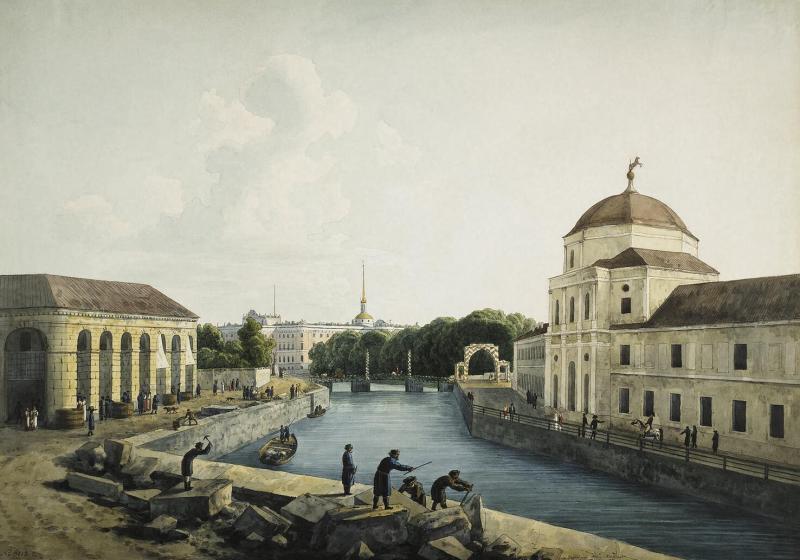
The wooden bridges gradually disappeared in the nineteenth century and do not exist in the city anymore. Granite embankments appeared in the second half of the eighteenth century. Andrey Yefimovich Martynov, View of the Moika River by the Imperial Stables, 1809. Watercolour and Indian ink, 60 x 86 cm.
The wooden bridges gradually disappeared in the nineteenth century and do not exist in the city anymore. Granite embankments appeared in the second half of the eighteenth century. Andrey Yefimovich Martynov, View of the Moika River by the Imperial Stables, 1809. Watercolour and Indian ink, 60 x 86 cm.
© The State Hermitage Museum
This work is used by permission of the copyright holder.
Unchannelized rivers are dynamic environments where water and land constantly move. Living close to or even within riverine landscapes poses complex challenges. The river determines people’s lives to a great extent, shaping them spatially and temporally. In turn, societies have modified rivers considerably in order to secure their own needs and overcome the risk of flooding. During the period of modernization in particular, new technologies offered unprecedented possibilities to change the nature of rivers. As important centers of technical expertise, Vienna and St. Petersburg eventually created almost-new landscapes. This is particularly true for the history of the Viennese Danube. This section visualizes the changes in riverscapes essential for both capitals.
Pollution and Industrialization of the Austrian and Viennese Danube in the 19th and Early 20th Centuries
Rapidly growing cities of the eighteenth and nineteenth centuries were full of environmental risks and problems—overcrowded, industrialized, and equipped with quite primitive sanitary technologies. Urban dwellers used to dump their waste into rivers. During the first decades of the nineteenth century, urban populations started to consider pollution a problem. In this section we describe similarities and differences in the history of water supply, pollution, and waste management in St. Petersburg and Vienna. Both cities faced similar problems, though St. Petersburg used the Neva as a source of drinking water while Vienna started to tap Alpine rivers as a source of drinking water in the 1870s.
Invalid Scald ID.
Fish Consumption
Both capitals were major centers of consumption in Europe. The growing population required a lot of food and fish was part of city dwellers’ diets. Vienna and St. Petersburg used both local and imported food resources and often created specific recipes that determined local consumption culture. Significant social stratification led to a clear division between fish commodities for wealthy and those for poor citizens, though some kinds of fish could be popular among all residents regardless of social differences. The smelt, which became a sort of iconic fish of St. Petersburg, is the best example of this. In Vienna, fish was comparatively expensive and thus mainly consumed by wealthy people, except on special occasions such as Christmas.
Further readings
Gierlinger, Sylvia, Gertrud Haidvogl, Simone Gingrich, and Fridolin Krausmann. “Feeding and Cleaning the City: The Role of the Urban Waterscape in Provision and Disposal in Vienna during the Industrial Transformation.” Water History 5, no. 2 (2013): 219–39.
Haidvogl, Gertrud, Marianna Guthyne-Horvath, Sylvia Gierlinger, Severin Hohensinner, and Christoph Sonnlechner. “Urban Land for a Growing City at the Banks of a Moving River: Vienna’s Spread into the Danube Island Unterer Werd from the Late 17th to the Beginning of the 20th Century.” Water History 5, no. 2 (2013): 195–217.
Hohensinner, Severin, Bernhard Lager, Christoph Sonnlechner, Gertrud Haidvogl, Sylvia Gierlinger, Martin Schmid, Fridolin Krausmann, and Verena Winiwarter. “Changes in Water and Land: The Reconstructed Viennese Riverscape from 1500 to the Present.” Water History 5, no. 2 (2013): 145–72.
Kraikovski, Alexei, and Julia Lajus. “The Neva as a Metropolitan River of Russia: Environment, Economy and Culture.” In Rivers and Society: From Early Civilizations to Modern Times, edited by Terje Tvedt, Terje Oestigaard, Richard Coopey, Graham Chapman, and Roar Hagen, 339–64, A History of Water series 2, vol. 2. New York: I. B. Tauris, 2010.
Kraikovski, Alexei, and Julia Lajus. “Towards the History of the Neva River Fisheries: Sources, Methods, General Tendencies (15th–18th CC).” In Leva Vid Östersjöns Kust. En Antologi om Resursutnyttjande på Båda Sidor av Östersjön ca 800–1800, edited by Sven Lilja, 217–27. Stockholm: Södertörn, 2008.
Lajus, Julia, Alexei Kraikovski, and Dmitry Lajus. “Coastal Fisheries in the Eastern Baltic Sea (Gulf of Finland) and its Basin from the 15 to the Early 20th Centuries.” PLoS ONE 8, no. 10 (2013): e77059. doi:10.1371/journal.pone.0077059.
Related projects
- Environmental History of the Viennese Danube 1500–1890: Understanding Long-Term Dynamics, Patterns, and Side-Effects of the Colonization of Rivers (EINVIEDAN)
- Long-term Dynamics of European Fish Populations (DYNAFISH)
- Oceans Past Initiative, network grown from the now concluded History of Marine Animal Populations (HMAP), which was a project within the Census of Marine Life Programme
How to cite
Haidvogl, Gertrud, Alexei Kraikovski, and Julia Lajus. “’Commanding, sovereign stream…’: The Neva and the Viennese Danube in the History of Imperial Metropolitan Centers.” Environment & Society Portal, Virtual Exhibitions 2019, no. 1. Rachel Carson Center for Environment and Society. http://www.environmentandsociety.org/node/6576.
ISSN 2198-7696 Environment & Society Portal, Virtual Exhibitions
 2019 Gertrud Haidvogl, Alexei Kraikovski, and Julia Lajus
2019 Gertrud Haidvogl, Alexei Kraikovski, and Julia Lajus
This refers only to the text and does not include any image rights.
Please click on an image to view its individual rights status.





